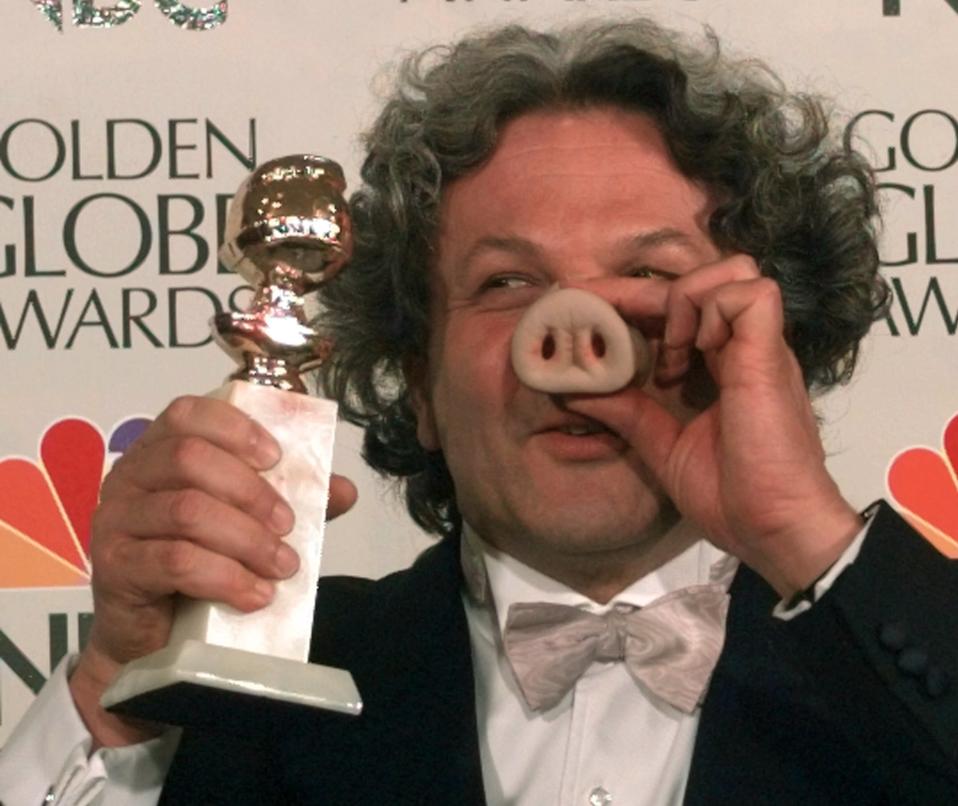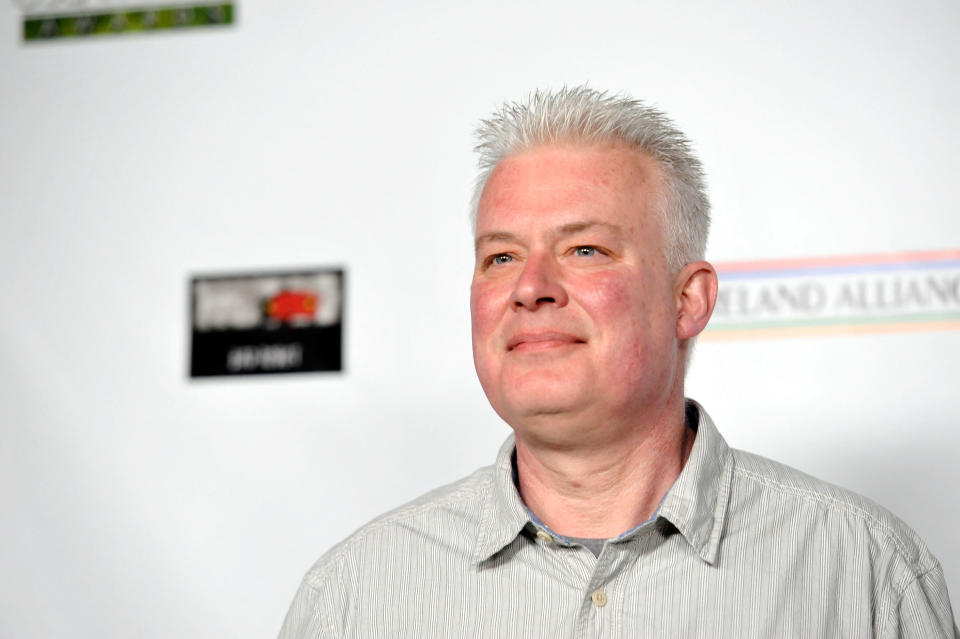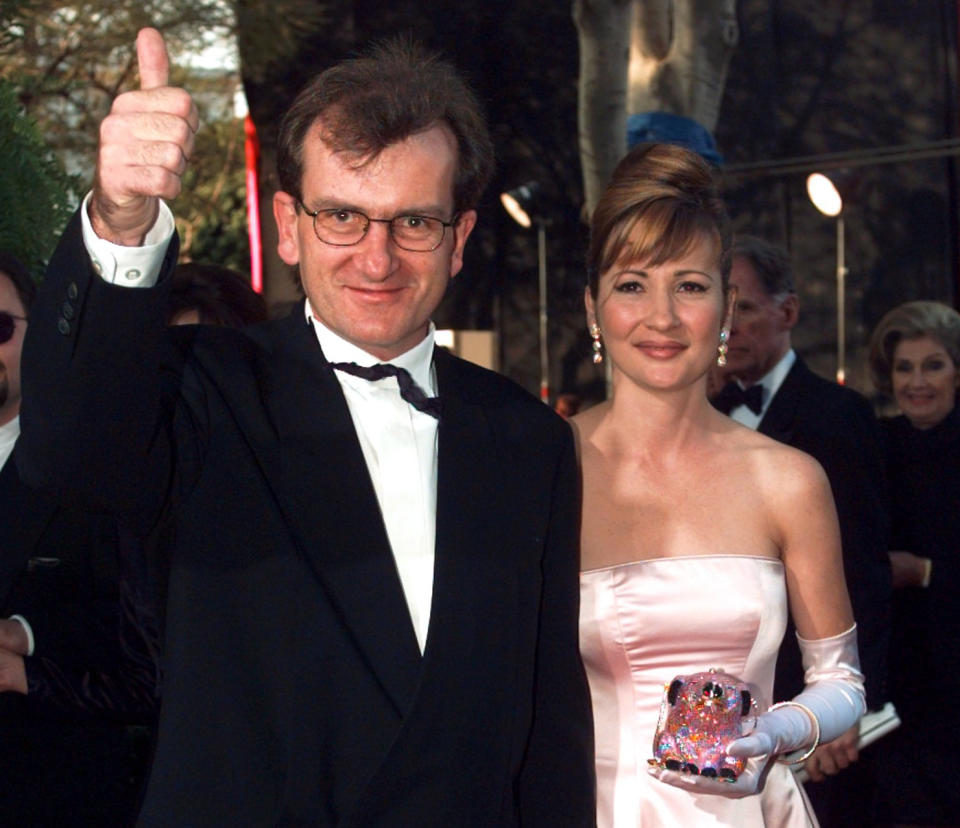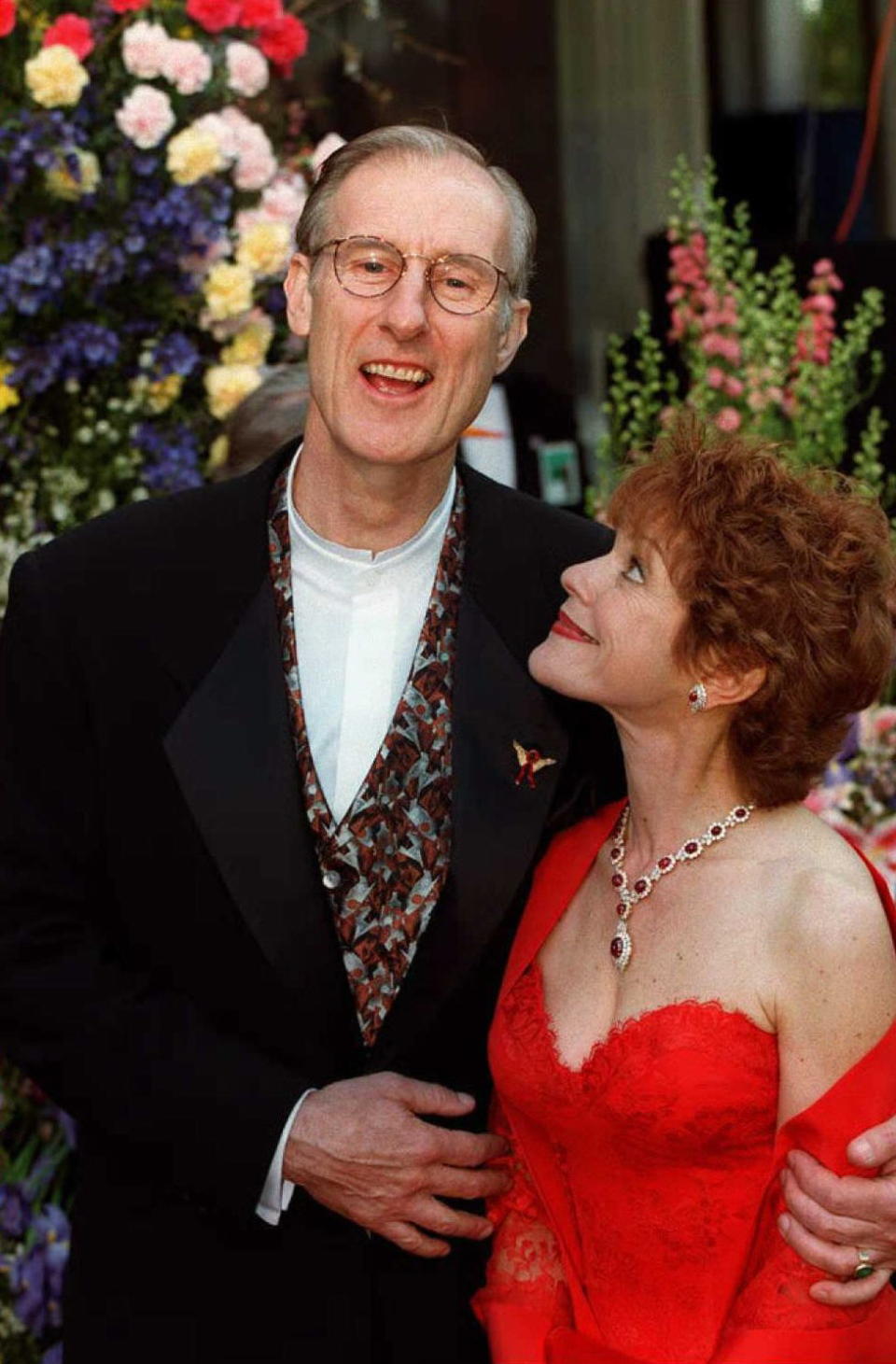'Babe' at 25: How the pioneering Oscar-winning classic was made

An unexpected box office smash, awards darling and possessor of one of cinema’s truly great final lines – “That’ll do pig, that’ll do”, in case you’ve forgotten – Babe is a rare film for the sheer ubiquity of love shown to it by anyone who’s come into its orbit. But what’s remarkable about this sweet tale of a charming pig with a knack for sheep-herding is it’s also a cinematic trailblazer that helped usher in a new wave of special effects back in 1995.
We take a look back at how it was done…
How can we make a pig talk?
Dick King-Smith’s The Sheep-Pig is a straightforward book. Slim, published in 1983, it doesn’t particularly scream Hollywood. At the time, Australian producer/director George Miller probably didn’t think that ten years later, he would have been having nightly telephone conversations with Stanley Kubrick about how to make a pig talk on-screen.
Read more: Revisiting the forgotten Chinatown sequel
But having decided to adapt King-Smith’s novel after he heard a woman laughing while she read it during a flight in the mid-1980s, that’s exactly what happened as Miller (Mad Max) trawled the globe trying to figure out how to realise his vision of a live-action movie version.

“I explained we’re trying to make a pig talk,” Miller told The Hollywood Reporter about his Kubrickian chats. “Every night, we’d sit and talk for a long, long time and talk about the process and I knew he was very, very intrigued about what could be happening.”
It took Miller a long time to work out how to actually make the film. “I travelled everywhere, America, Japan, looking for the technology,” he told the LA Times in 1996. “The first time we budgeted it out, it came to $100million.”
In other words, initially, the tools didn’t exist. Eventually, films like Terminator 2 and Jurassic Park came along, proving that CGI had progressed to a point where Babe might be feasible. But the filmmakers also wanted most of the action to be shot in-camera – mixing trained animals with CG enhancements alongside animatronic puppets.
Scouting for a team who could pull off the necessary work, one research trip took the producers to England and Jim Henson’s Creature Shop. Already known for being at the cutting edge of animatronic technology, a young artist called Neal Scanlan was asked to give their visitors a tour of the facility.

“Most effects houses, if not all effects houses, ran a mile from the project,” Scanlan tells Yahoo Movies UK. Then a neophyte designer who’d worked on things like Labyrinth and Little Shop of Horrors, Scanlan is now a titan of the industry, responsible for supervising the creature effects for all of the Star Wars’ sequels and spin-offs.
But with films and TV shows like The Storyteller and Teenage Mutant Ninja Turtles, Henson’s had created some exciting performance technology and Scanlan felt he was ready to push the envelope. He was given the task of leading the project and building the creatures.
There was one important question. Er, how?
Building Babe (and the rest of the farmyard)

“When they first came to me in 1992 and said they wanted to do this project with hundreds of CG and animatronic shots, I was sceptical,” visual effects supervisor Scott Anderson told Cinefex back in 1995. “A lot of people didn’t believe that the animatronics would work or that the digital effects could be done at that level.”
Neal Scanlan, at least at first, might have agreed with him.
“I would probably start work at eight o’clock in the morning and I would normally finish at about three o’clock in the morning,” he says. “And that was seven days a week for a year. Because every single day, we sat there and we thought, ‘we can’t do this’.”
Read more: Waterworld at 25
The primary challenge was that unlike a Muppet or humanoid amphibian, pigs, dogs and other farmyard animals are, well, real. They had to start thinking about posture and anatomy because, as Scanlan explains, “when a pig sits down, it sits down in a very specific way, looks a very specific way.”
“It was the first situation where we were not trying to produce a fantasy or science fiction character, we were actually trying to replicate real life,” he continues. “To convince an audience that they are looking at a real pig, when in fact it’s an animatronic pig. An awful lot of the techniques and materials we were using were just not sufficiently realistic enough. Our approach to certain things was just not sophisticated enough to replicate real life.”
To prove it was possible, the team decided to produce a working prototype of Babe’s head. They had to figure out what material to use because foam latex was too opaque, while silicone could be tight and unflexible. They needed, for example, the skin to be malleable, but when a light was shone at Babe’s ears, they would allow the light through like real pig’s ears. Hair would have to be punched one strand at a time.
“The eyeballs for Babe we made ourselves and they were a liquid-filled eyeball that had a tiny silicon bubble in it that you were able to press from behind so that his pupils could get larger and smaller.”
They travelled to Los Angeles just before Christmas to shoot the first test for the producers. It was successful, but the filmmakers had one worry – they had basically just replicated a real pig.
“The next phase was to produce a pig that had something about it which would make it a movie star pig.”
That breakthrough came on the second test, which was shot on a barnyard set with dialogue that Miller had written specially.
Says Scanlan, “When we saw the rushes for that, you kind of knew this could really, really work.”
Putting Babe on film
But of course, this was only the beginning. Before Babe could go in front of the cameras, they had to train the real animals, build all those animatronics and develop the CGI effects.
The filmmakers, including Scanlan, sat down and storyboarded the entire movie, figuring out what could and couldn’t be done and how they would do it if they could. They decided on a simple methodology.
“Whenever Babe spoke and was not walking in the shot, we would try to do that with an animatronic,” says Scanlan. “Whether he was sitting, standing or lying. We made those three versions, all of which had their own head and all of which were capable of delivering dialogue. That philosophy was taken over to the cat. All the dialogue sequences in front of the fire between Babe and the cat are animatronic in the film.”
There was also Ferdinand the duck (who Scanlan rather sweetly calls Ferdy).
“Whenever Ferdy was having a conversation and was on the spot talking to Babe, then that would be an animatronic,” he says. “We also did that for the dogs. But the dogs were less successful for us…There are only a few [animatronic] shots in the film of the dogs.”
Meanwhile, frequent Miller collaborator John Cox was charged with building the animatronic sheep, trainer Karl Miller wrangled the real creatures, whilst CGI effects house Rhythm & Hues was developing the tools necessary to animate their mouths.
The shoot

Principal photography took place in Australia over nineteen weeks under the direction of Chris Noonan, with a budget of $35million, a huge amount for a supposed kids’ film with no stars. Miller co-wrote and produced. “I was preparing to do another film (an aborted version of eventual Jodie Foster-starrer Contact) and also [Babe] was a pretty complex film to make, particularly to train the animals,” he explained to the Hollywood Reporter later. “I thought if I could help oversee the process, that would be more helpful.”
The Noonan-Miller relationship appears to have become a fraught one. “I don’t want to make a lifelong enemy of George Miller but I thought that he tried to take credit for Babe, tried to exclude me from any credit and it made me very insecure,” Noonan told The Australian in 2006. Interestingly, Miller himself directed the sequel Babe: Pig in the City with zero involvement from Noonan, with the latter not even invited to the premiere.
Read more: The wild story behind Caddyshack
As Miller himself would say, the shooting of the first Babe was like a “pre-planned military exercise”. Five hundred animals were on-set, as well as 60 trainers and a crew of 200 (this was before the 10-month CGI postproduction period).

Having built the required characters, Scanlan was Down Under for nine months, overseeing the animatronics and their performers, who were utilising the Jim Henson performance system, particularly a special piece of kit they called the Expression Maker.
“We had a thing at the time called a mitt, which was very much like putting your hand inside the mouth of, say, Kermit, but it was a mechanical implement,” he says.
The Expression Maker was a way of programming the machinery inside the animatronic animals to respond to how the performer moved their hand.
“If I pushed my hand forward, that would make Babe smile, if I pulled the glove back that would make him look sad,” he continues. “If I put it to the side, it would make him, I don’t know, wink. Then on top of that you could manipulate all the individual things, like the eye blinks and the eye movements. One or two puppeteers could do all of that.”
Alongside this high-end tech were more grounded, familiar methods.
“Ferdy the duck was mostly cable-controlled. Because of the thinness of his neck and general anatomy, he was more suited to being operated by fine cables.”

The puppeteers stayed out of sight of the actors, like James Cromwell as Farmer Hoggett.
“The joy of animatronics is that it is instantaneous,” says Scanlan. “It’s directable and it’s infinitely variable, so it’s just like an actor. When Jamie [Cromwell] was talking to Babe, he was just talking to Babe, he didn’t see the puppeteer. That allowed for spontaneity.”
But despite all their prep, it was nail-biting work. Ferdinand was only finished two days before his first scene and the cat was not far behind.
“We kept pushing and pushing,” admits Scanlan. “I have never worked harder and longer and more on the edge before or since [this] project. In those days, everything from a cable breaking, to a motor getting too hot, to a signal getting interfered with, to the material tearing, to dust…it was literally minute-by-minute.”
All that hard work paid off. With 150 animatronic and 130 CGI shots in the bag, the movie was released to critical adoration and good box office, further shocking the establishment by snagging seven Oscar nominations, including Best Director and Best Picture.

Scanlan and his team were nominated and then won for Best Visual Effects.
“Twenty-five years ago I was a young man and never in my wildest dreams would I have thought we’d be nominated for an Oscar,” he remembers. Still, he says, “We had gone to the ends of the Earth to try and make that film work – if we were going to be rewarded for it, then at least we’d earned it.”
Legacy

Scooping more than $250million around the world and spawning a flop 1998 sequel that remains one of the most subversive mainstream blockbusters ever made (which is worth revisiting), Babe helped change movies. It turned James Cromwell into a much-loved (and very vegan) actor, reminded Hollywood of George Miller’s unique skillset and paved the way for Scanlan’s latter work on Star Wars and Jurassic World sequels.
“If I can trace back all the many blessings that exist in my life, it all began with that one film,” Cromwell told Vice five years ago.
“We were infected by the spirit of the book,” Miller said to the LA Times. “We felt it was valuable to do and treated the material seriously but always had great fun.”
As for Neal Scanlan, one of the people who actually allowed the film to exist by finding a way to make that pig talk?
“For me, it was utterly life-changing,” he says. “I think on a personal level, Babe was my coming-of-age. It formed an awful lot, personally, of how I moved on in the industry.”
That’ll do, pig.
Babe is currently streaming on Netflix, and Now TV with a Sky Cinema Pass.

 Yahoo Movies
Yahoo Movies 
